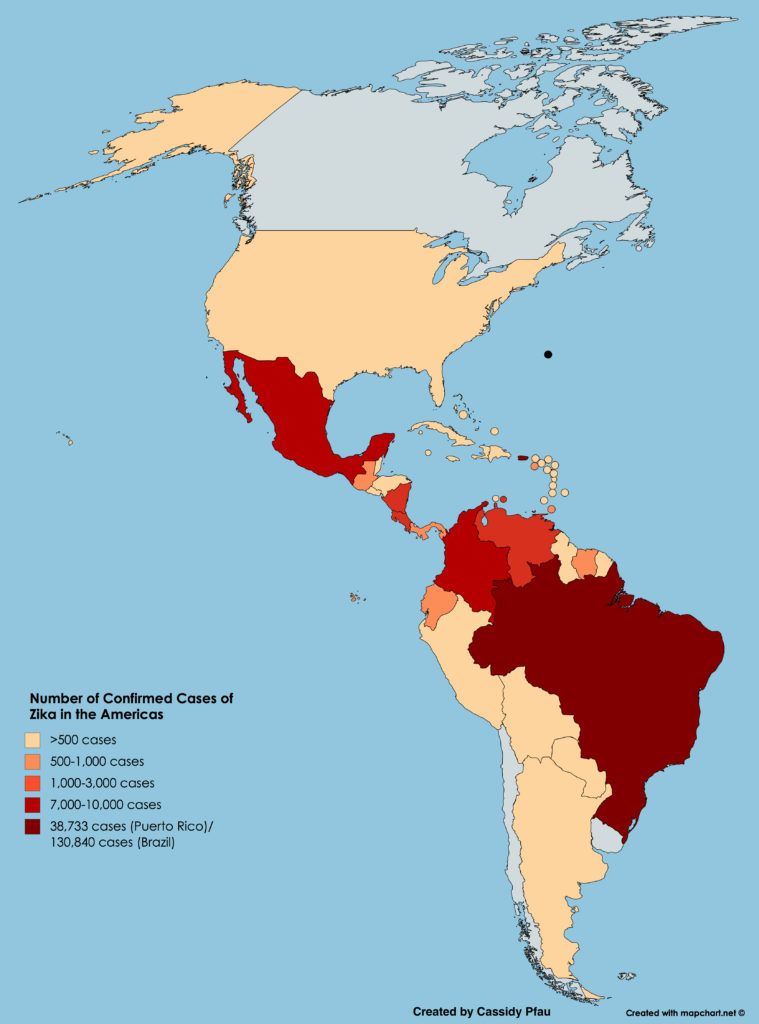Conspiracy theories have long fascinated me. I’ve published (with my colleague Leopoldo Rodriguez) on the death of Alberto Nisman in Argentina, and the conspiracy theories that tragedy spawned. I’ve also written about the conspiracy theories that circulated regarding the 2009 H1N1 influenza epidemic. More recently, I’ve been doing research on the Zika epidemic. I’ve just published an article, “Conspiracy Theories and the Zika epidemic,” which you can view in the open-access Journal of International and Global Studies.
Here is the abstract:
After a Zika outbreak began in Brazil in April 2015, narratives blamed the virus on a
variety of international actors, including chemical companies and the Gates Foundation. Many of
these narratives drew upon older conspiracy theories that had circulated in Latin America during
the 2009 H1N1 influenza pandemic. Whether these narratives denounced transgenic mosquitoes
or pesticides, they reflected not only the fear created by a mysterious wave of birth defects but
also a profound mistrust of health authorities and transnational corporations. This paper will
examine the narratives that circulated on YouTube, blogs, podcasts, and other alternative media
sources, which typically blamed outside forces (and their dangerous use of science) for the
emergence of the virus. These popular narratives provide insight into how Latin Americans in
general—and Brazilians in particular—have interpreted this epidemic in the context of
globalization.

One of the themes that I touch on in the conclusion of this work is the tremendous harm that conspiracy theories can do to public health efforts, and the need for public health communication to address these beliefs. I also argue that conspiracy theories should be included in all social science theory courses, despite academics’ disdain for them.
For anyone interested in learning more about the Zika outbreak in a Brazilian context, I strongly recommend this concise, well-researched and beautifully translated work:
Diniz, D. (2017). Zika: from the Brazilian Backlands to Global Threat (Diane R. Grosklaus Whitty, Trans.) London: Zed Books.
I also wish to thank the students who worked with me to research this project: Sandra Ambrosio, Vitoria Magno-Baptista, Shay Morris-Doty, and Cassidy Pfau. Without their help, this paper would not have been possible. I also wish to thank Leopoldo Rodriguez (once more with conspiracy theories!) and Esther Manea, who provided helpful comments.
Lastly, if you want to understand the context that shapes how many Americans view conspiracy theories, I recommend episode 6, “Rabbit Holes: Watergate turned American into a nation of conspiracy theorists,” on the Podcast Slow Burn. One of my students recently recommended it to me, and it’s a well-produced and engrossing look at the national paranoia that emerged during the Watergate era. The difficult point about conspiracy theories is that whether a narrative counts as an irrational belief is ultimately a judgement call. On the one hand, true conspiracies -which entail a secret alliance among multiple actors to carry out an immoral act- are rare. But at they also do happen. Nazi Germany really did manufacture the Gleiwitz incident -a fake polish attack on a German radio station- at the start of World War Two. And in the United States, there really was a conspiracy (complete with wiretaps and break-ins) based in the White House during the Watergate era. And this conspiracy caused a profound change in how Americans viewed their government.
The “Rabbit Holes” episode of the Slow Burn podcast tells the story of Mae Brussel, who became a conspiracy theorist in the aftermath of the JFK assassination. Despite a strange obsession with dune buggies, she became a radio personality in the Watergate era, as many people found that her views seemed increasingly plausible. To me, she seems to be the real world prototype of Murray Bauman, my favorite character on the television series Stranger Things. I wonder if it’s a coincidence that the two shared the same initials: Mae Brussel/Murray Bauman. You can listen to some of her old shows still on Youtube, including one in which she suggests that Adolf Hitler might have survived the end of World War Two. .
The “Rabbit Holes” episode combines Mae Brussel’s story, with that of a terrible plane crash (United Flight 553 in Midway Chicago on December 8, 1972), which killed Dorothy Hunt, who was married to the man behind the Watergate break-in. Hunt had $10,000 in her purse when United flight 553 went down. The interlinked narratives frame a true rabbit hole, and a dark look into why many Americans still mistrust their government. I also strongly recommend the Slow Burn podcast as a whole, particularly the first episode, “Martha.” This episode tells the story of Martha Mitchell, who was kidnapped during a conspiracy by the Nixon White House, which sought to convince people that she was crazy.
Many of my students have a world view defined by the fact that no weapons of mass destruction were ever found in Iraq. Nothing that the U.S. government says to justify foreign involvement seems credible to many of these students, who have simply lost trust in national leaders and institutions. This earlier history has echoes on the era of the Mueller probe, Snowden, as well as concerns about the “Deep State” and NSA, which makes this podcast episode worth hearing.
Note: I updated this blog post in August 2018, after listening to more Slow Burn podcast episodes.

